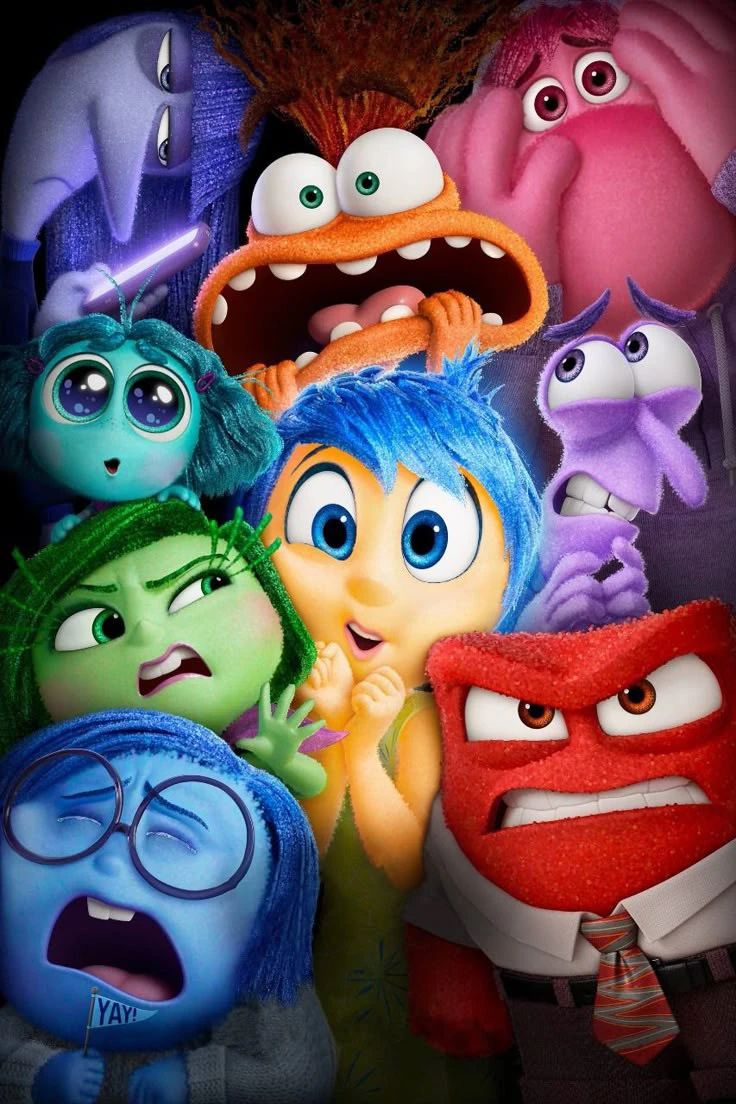Inside Out, released by Pixar in 2015, became infamous for its unique concept, which introduces the mind of an 11-year-old girl, “Riley”; the use of colourful graphics and animation distracted the viewers from the layers in the plotline. Although when re-watching and analysing the movie as a psychology student, I was able to recognise all the subtle messages conveyed. The film revolves around the emotions we experience and process, such as Joy, Sadness, Anger, Fear, and Disgust, each of which is given its personality and character. The movie served as a cinematic masterpiece, portraying emotional intelligence and introducing the general audience to abstract emotions and the cognitive development a child undergoes during this age. However, upon closer examination, is emotional intelligence inherently gendered?
Emotional intelligence refers to the process of identifying, understanding, and managing emotional expressions, and is stereotypically associated with feminine traits. Ever since childhood, females have been more prone to expressing emotions than males, to empathising with those around them, and to maintaining harmony. While boys, on the other hand, are not that in tune with their emotions and are encouraged to suppress their feelings, and are often asked to “man up,” which later develops mental health issues and disorders due to not finding a proper outlet.
This stereotypical take on emotional intelligence can be seen in the movie as it is more “female-centric”. Riley, the main character, was perceived as a young girl whose emotions were primarily driven by joy and anger. Both were voiced by females and shown as multidimensional figures. Joy can be seen as upbeat and flawed, while sadness is melancholic. The narrative portrayed in the movie conveys the message of maintaining emotional balance rather than suppressing emotions.
The use of the gendered character might be one of the loopholes in the movie, as there is a lesser representation of male emotions. Although her father’s character is briefly shown, it does not suffice in delivering the awareness that should be conveyed to the viewers.
While Inside Out and other global media platforms can be used as a reliable medium for teaching emotional literacy, it is essential to consider how the narrative would be if we had a male protagonist in the movie, and whether the emotions they experience would be represented with the same level of detail.
In the broader context of gendered emotional expression, society conditions males and females differently. Girls are socialised to communicate, seek help, and express vulnerability, while boys are praised for stoicism and emotional restraint.
This disparity becomes embedded within cultures, leading to women being labelled “too emotional” when expressing justified anger or sadness, and men being shamed for crying or displaying affection. Media representations such as Inside Out, despite their brilliance, risk reinforcing the same dichotomies. Had the movie explored a boy’s inner emotional landscape, it might have dismantled the myth that males lack emotional depth or complexity.
So, while Inside Out remains an innovative portrayal of emotions, future media must urgently break free from gendered stereotypes. Depicting male emotional intelligence with equal nuance is not optional; it is essential to dismantle toxic masculinity and create societies where vulnerability is not gendered. Emotional literacy is a human necessity, and media has the power – and responsibility – to teach boys that feeling deeply is not weakness, but profound strength.
It is time we demand stories that show boys crying without shame, expressing fear without mockery, and embracing empathy as a tool of resilience. This shift will not only empower them but will also cultivate generations of men who are emotionally secure, nurturing, and capable of meaningful relationships. When media dares to break these outdated molds, it sets the foundation for a world where gender equality includes emotional equality, creating safer, kinder societies for all.
















